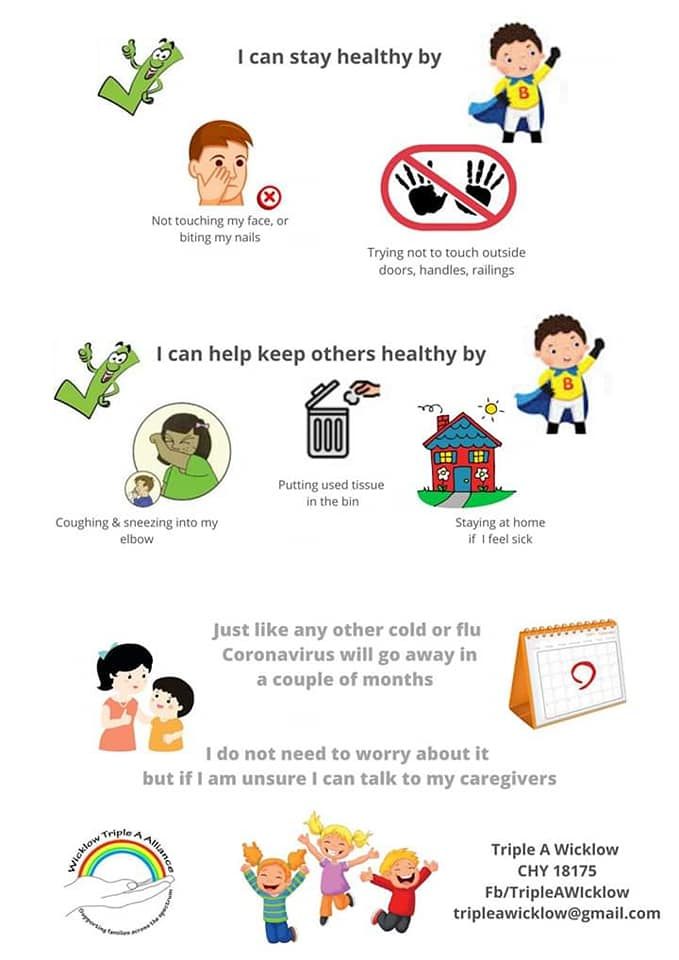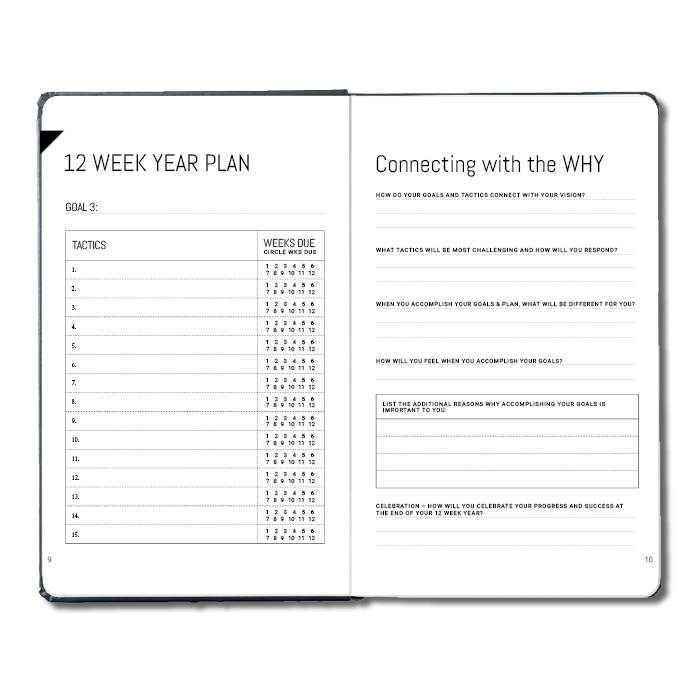How to help your child with autism
How to help your autistic child with day-to-day life
How to help your child communicate
Do
-
use your child's name so they know you're speaking to them
-
keep language simple and clear
-
speak slowly and clearly
-
use simple gestures, eye contact and pictures or symbols to support what you're saying
-
allow extra time for your child to understand what you have said
-
ask your autism assessment team if you can get help from a speech and language therapist (SLT)
-
try ways to help them communicate, such as Signalong, Makaton or PECS
-
read tips from the National Autistic Society on communicating with your child
Don’t
-
try not to ask your child lots of questions
-
try not to have a conversation in a noisy or crowded place
-
try not to say things that could have more than 1 meaning, such as "pull your socks up" or "break a leg"
Dealing with anxiety
Anxiety affects a lot of autistic children and adults. It can be caused by not being able to make sense of things going on around them, and feeling misunderstood or unaccepted by people who are not autistic.
Try to find out why your child's feeling anxious.
It might be because of:
- a change in routine – it might help to prepare your child for any change, such as a change of class at school
- difficulty identifying, understanding or managing their feelings
- a noisy or brightly coloured place – it might help to take your child to a calmer place, such as another room
If your child is often anxious, ask your GP about therapy, such as cognitive behavioural therapy (CBT), which may help.
Search The National Autistic Society's directory for counsellors experienced in helping people with autism and read more about managing anxiety.
Helping with your child's behaviour
Some autistic children have behaviours such as:
- stimming – a kind of repetitive behaviour (such as flapping their hands or flicking their fingers)
- meltdowns – a complete loss of control caused by being totally overwhelmed
If your child has these behaviours, read our advice about how to help your child's behaviour.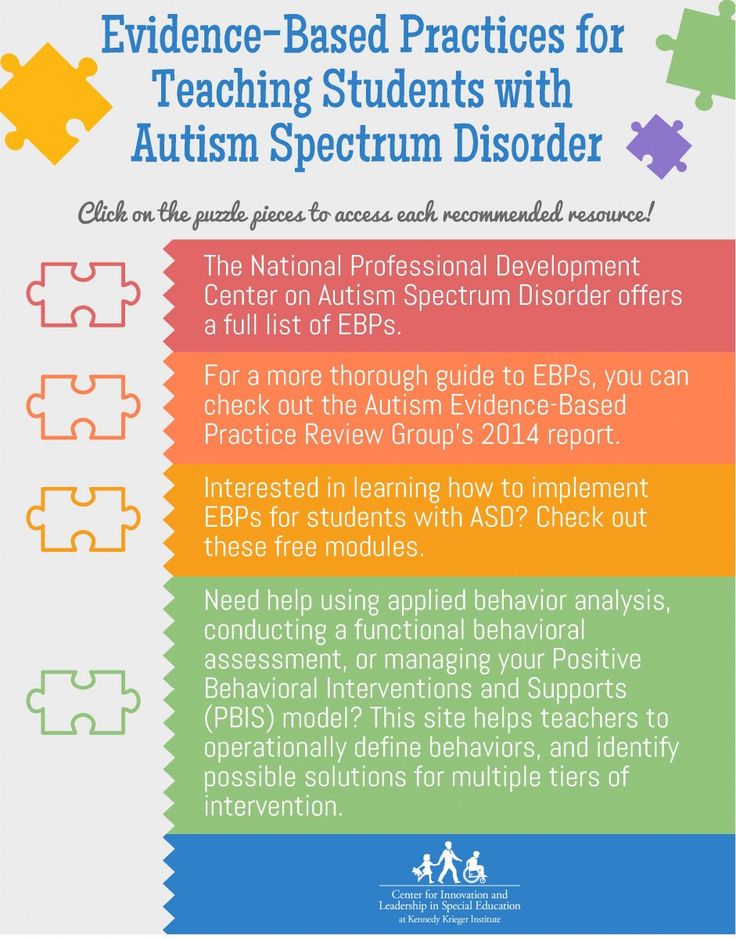
Eating difficulties
Many children are "fussy eaters".
Autistic children may:
- only want to eat foods of a certain colour or texture
- not eat enough or eat too much
- eat things which are not food (called pica)
- have problems with coughing or choking while eating
- be constipated, so they feel full even when they have not eaten much food
It may help to keep a food diary, including what, where and when your child eats. This can help you notice any common issues your child has.
Speak to a GP or your autism team about any problems your child's having with eating.
The National Autistic Society has more about how to help with eating problems
Problems sleeping
Many autistic children find it hard to get to sleep, or wake up several times during the night.
This may be because of:
- anxiety
- sensitivity to the light from smartphones or tablets
- problems with the sleep hormone melatonin
- issues such as hyperactivity or a health condition that affects sleep
You can help your child by:
- keeping a sleep diary of how your child sleeps to help you notice any common issues
- following the same bedtime routine
- making sure their bedroom is dark and quiet
- letting them wear ear plugs if it helps
- talking to a GP about how to manage health conditions that make sleep difficult, such as a food sensitivity or breathing problem
If these tips do not help, talk to your autism team about creating a sleep plan to help your child's sleep behaviour.
If your child's sleep does not get better, a GP might refer you to a paediatrician or child psychiatrist with experience of autism who can prescribe a medicine called melatonin to help your child sleep.
Staying healthy
It's important that your child has regular check-ups with the:
- dentist
- optician
- doctors treating any other conditions your child has
Children over 14 who also have a learning disability are entitled to an annual health check.
Do not be afraid to let staff know what they can do to make it easier to go for check-ups.
Find out more ways to stay healthy from the National Autistic Society
Friendships and socialising
Some autistic children find it hard to make friends.
There are some things you can do to help:
Do
-
get ideas from other parents on autism forums and local support groups
-
ask your child's school if they can help
-
ask your autism team how to help your child communicate and socialise
-
search the National Autism Society directory for local social groups that are autism-friendly
-
read more advice about making friends from the National Autistic Society
Helping Your Child with Autism Thrive
autism
There are many things you can do to help a child with Autism Spectrum Disorder (ASD) overcome their challenges.
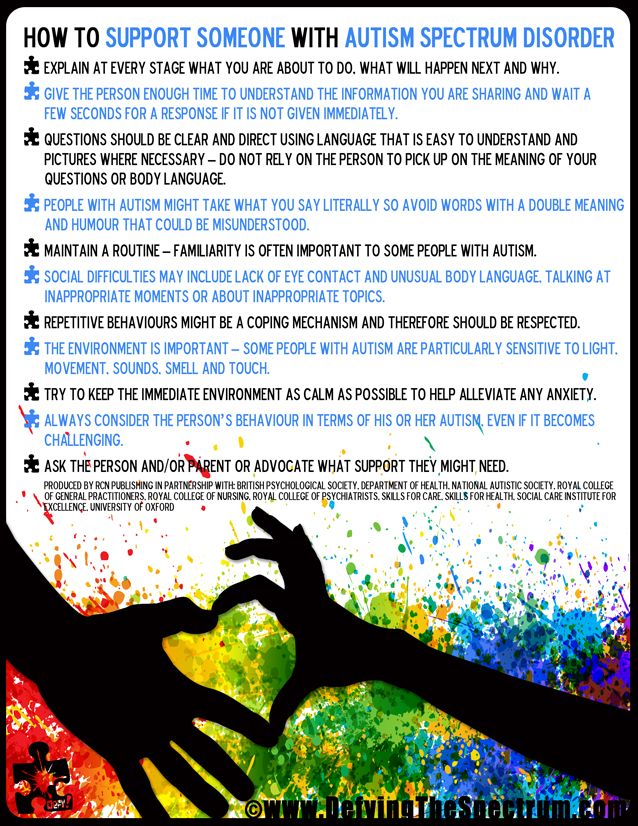 These parenting tips, treatments, and services can help.
These parenting tips, treatments, and services can help.A parent's guide to autism treatment and support
If you've recently learned that your child has or might have autism spectrum disorder, you're probably wondering and worrying about what comes next. No parent is ever prepared to hear that a child is anything other than happy and healthy, and an ASD diagnosis can be particularly frightening. You may be unsure about how to best help your child, or confused by conflicting treatment advice. Or you may have been told that ASD is an incurable, lifelong condition, leaving you concerned that nothing you do will make a difference.
While it is true that ASD is not something a person simply “grows out of,” there are many treatments that can help children acquire new skills and overcome a wide variety of developmental challenges. From free government services to in-home behavioral therapy and school-based programs, assistance is available to meet your child's special needs and help them learn, grow, and thrive in life.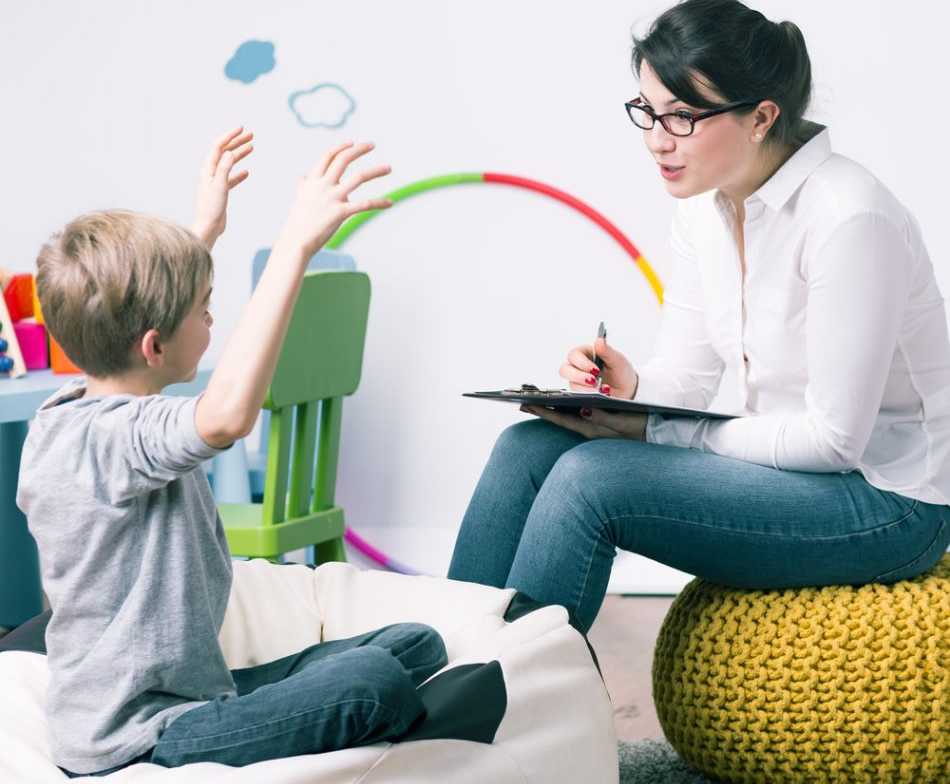
When you’re looking after an autistic child, it’s also important to take care of yourself. Being emotionally strong allows you to be the best parent you can be to your child in need. These parenting tips can help by making life with an autistic child easier.
Don't wait for a diagnosis
As the parent of a child with ASD or related developmental delays, the best thing you can do is to start treatment right away. Seek help as soon as you suspect something's wrong. Don't wait to see if your child will catch up later or outgrow the problem. Don't even wait for an official diagnosis. The earlier children with autism spectrum disorder get help, the greater their chance of treatment success. Early intervention is the most effective way to speed up your child's development and reduce the symptoms of autism over the lifespan.
[Read: Does My Child Have Autism?]
When your child has autism
Learn about autism. The more you know about autism spectrum disorder, the better equipped you'll be to make informed decisions for your child. Educate yourself about the treatment options, ask questions, and participate in all treatment decisions.
Educate yourself about the treatment options, ask questions, and participate in all treatment decisions.
Become an expert on your child. Figure out what triggers your kid's challenging or disruptive behaviors and what elicits a positive response. What does your child find stressful or frightening? Calming? Uncomfortable? Enjoyable? If you understand what affects your child, you'll be better at troubleshooting problems and preventing or modifying situations that cause difficulties.
Accept your child, quirks and all. Rather than focusing on how your autistic child is different from other children and what he or she is “missing,” practice acceptance. Enjoy your kid's special quirks, celebrate small successes, and stop comparing your child to others. Feeling unconditionally loved and accepted will help your child more than anything else.
Don't give up. It's impossible to predict the course of autism spectrum disorder. Don't jump to conclusions about what life is going to be like for your child.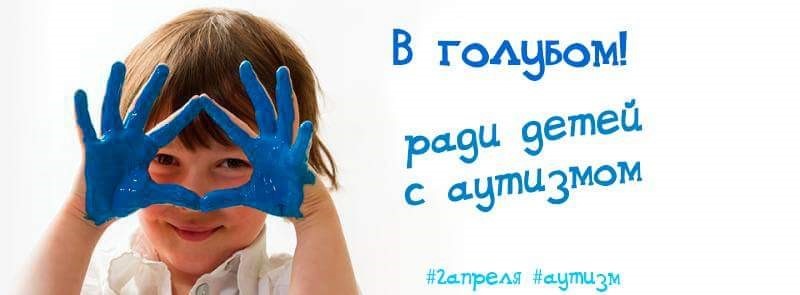 Like everyone else, people with autism have an entire lifetime to grow and develop their abilities.
Like everyone else, people with autism have an entire lifetime to grow and develop their abilities.
Helping your child with autism thrive tip 1: Provide structure and safety
Learning all you can about autism and getting involved in treatment will go a long way toward helping your child. Additionally, the following tips will make daily home life easier for both you and your child with ASD:
Be consistent. Children with ASD have a hard time applying what they've learned in one setting (such as the therapist's office or school) to others, including the home. For example, your child may use sign language at school to communicate, but never think to do so at home. Creating consistency in your child's environment is the best way to reinforce learning. Find out what your child's therapists are doing and continue their techniques at home. Explore the possibility of having therapy take place in more than one place in order to encourage your child to transfer what he or she has learned from one environment to another.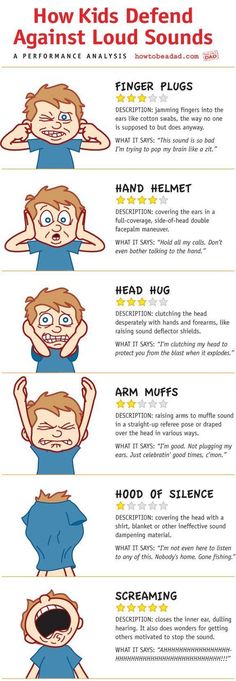 It's also important to be consistent in the way you interact with your child and deal with challenging behaviors.
It's also important to be consistent in the way you interact with your child and deal with challenging behaviors.
Stick to a schedule. Autistic children tend to do best when they have a highly-structured schedule or routine. Again, this goes back to the consistency they both need and crave. Set up a schedule for your child, with regular times for meals, therapy, school, and bedtime. Try to keep disruptions to this routine to a minimum. If there is an unavoidable schedule change, prepare your child for it in advance.
Reward good behavior. Positive reinforcement can go a long way with children with ASD, so make an effort to “catch them doing something good.” Praise them when they act appropriately or learn a new skill, being very specific about what behavior they're being praised for. Also look for other ways to reward them for good behavior, such as giving them a sticker or letting them play with a favorite toy.
Create a home safety zone. Carve out a private space in your home where your child can relax, feel secure, and be safe. This will involve organizing and setting boundaries in ways your child can understand. Visual cues can be helpful (colored tape marking areas that are off limits, labeling items in the house with pictures). You may also need to safety proof the house, particularly if your child is prone to tantrums or other self-injurious behaviors.
Carve out a private space in your home where your child can relax, feel secure, and be safe. This will involve organizing and setting boundaries in ways your child can understand. Visual cues can be helpful (colored tape marking areas that are off limits, labeling items in the house with pictures). You may also need to safety proof the house, particularly if your child is prone to tantrums or other self-injurious behaviors.
Tip 2: Find nonverbal ways to connect
Connecting with an autistic child can be challenging, but you don't need to talk—or even touch—in order to communicate and bond. You communicate by the way you look at your child, by the tone of your voice, your body language – and possibly the way you touch your child. Your child is also communicating with you, even if he or she never speaks. You just need to learn the language.
Look for nonverbal cues. If you are observant and aware, you can learn to pick up on the nonverbal cues that autistic children use to communicate. Pay attention to the kinds of sounds they make, their facial expressions, and the gestures they use when they're tired, hungry, or want something.
Pay attention to the kinds of sounds they make, their facial expressions, and the gestures they use when they're tired, hungry, or want something.
Figure out the motivation behind the tantrum. It's only natural to feel upset when you are misunderstood or ignored, and it's no different for children with ASD. When children with ASD act out, it's often because you're not picking up on their nonverbal cues. Throwing a tantrum is their way of communicating their frustration and getting your attention.
[Read: Autism Behavior Problems]
Make time for fun. A child coping with ASD is still a child. For both autistic children and their parents, there needs to be more to life than therapy. Schedule playtime when your child is most alert and awake. Figure out ways to have fun together by thinking about the things that make your child smile, laugh, and come out of her/his shell. Your child is likely to enjoy these activities most if they don't seem therapeutic or educational.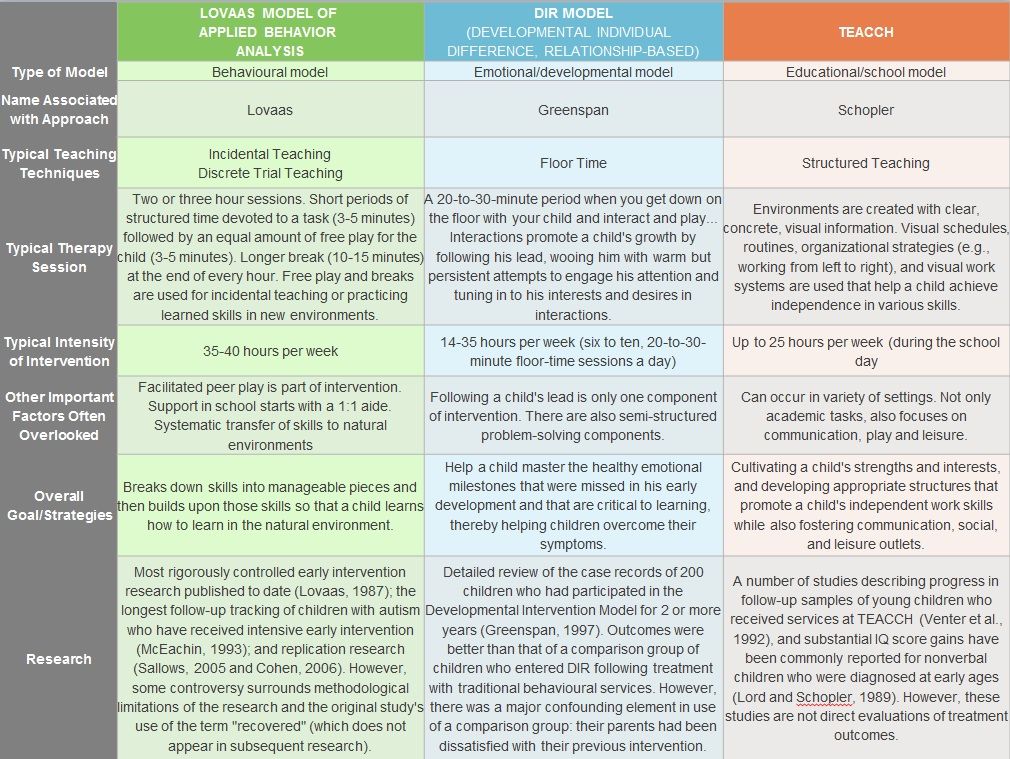 There are tremendous benefits that result from your enjoyment of your child's company and from your child's enjoyment of spending unpressured time with you. Play is an essential part of learning for all children and shouldn't feel like work.
There are tremendous benefits that result from your enjoyment of your child's company and from your child's enjoyment of spending unpressured time with you. Play is an essential part of learning for all children and shouldn't feel like work.
Pay attention to your child's sensory sensitivities. Many children with ASD are hypersensitive to light, sound, touch, taste, and smell. Some children with autism are “under-sensitive” to sensory stimuli. Figure out what sights, sounds, smells, movements, and tactile sensations trigger your kid's “bad” or disruptive behaviors and what elicits a positive response. What does your child find stressful? Calming? Uncomfortable? Enjoyable? If you understand what affects your child, you'll be better at troubleshooting problems, preventing situations that cause difficulties, and creating successful experiences.
Tip 3: Create a personalized autism treatment plan
With so many different treatments available, it can be tough to figure out which approach is right for your child.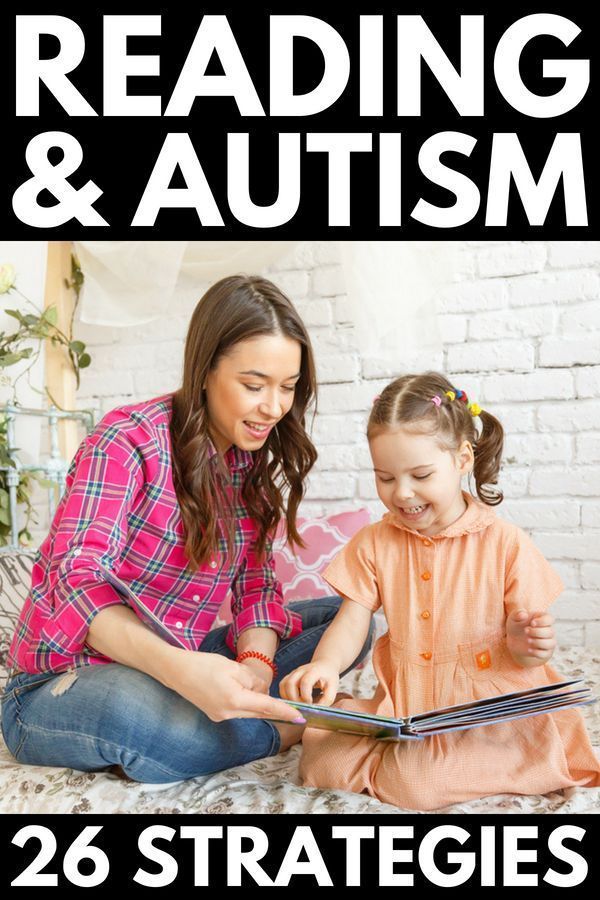 Making things more complicated, you may hear different or even conflicting recommendations from parents, teachers, and doctors.
Making things more complicated, you may hear different or even conflicting recommendations from parents, teachers, and doctors.
When putting together a treatment plan for your child, keep in mind that there is no single treatment that works for everyone. Each person on the autism spectrum is unique, with different strengths and weaknesses.
Your child's treatment should be tailored according to their individual needs. You know your child best, so it's up to you to make sure those needs are being met. You can do that by asking yourself the following questions:
What are my child's strengths – and their weaknesses?
What behaviors are causing the most problems? What important skills is my child lacking?
How does my child learn best – through seeing, listening, or doing?
What does my child enjoy – and how can those activities be used in treatment and to bolster learning?
Finally, keep in mind that no matter what treatment plan is chosen, your involvement is vital to success.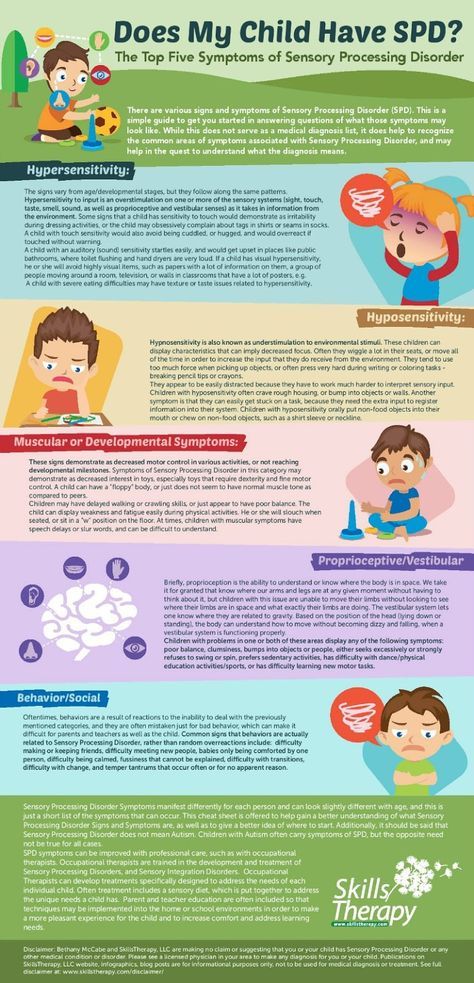 You can help your child get the most out of treatment by working hand-in-hand with the treatment team and following through with the therapy at home. (This is why your well-being is essential!)
You can help your child get the most out of treatment by working hand-in-hand with the treatment team and following through with the therapy at home. (This is why your well-being is essential!)
A good treatment plan will:
- Build on your child's interests.
- Offer a predictable schedule.
- Teach tasks as a series of simple steps.
- Actively engage your child's attention in highly structured activities.
- Provide regular reinforcement of behavior.
- Involve the parents.
Choosing autism treatments
There are many different options and approaches to ASD treatment, including behavior therapy, speech-language therapy, physical therapy, occupational therapy, and nutritional therapy.
While you don’t have to limit your child to just one treatment at a time, it’s unlikely you’ll be able to address everything at once. Instead, start by focusing on your child’s most severe symptoms and pressing needs.
[Read: Autism Treatments, Therapies, and Interventions]
Tip 4: Find help and support
Caring for a child with autism can demand a lot of energy and time.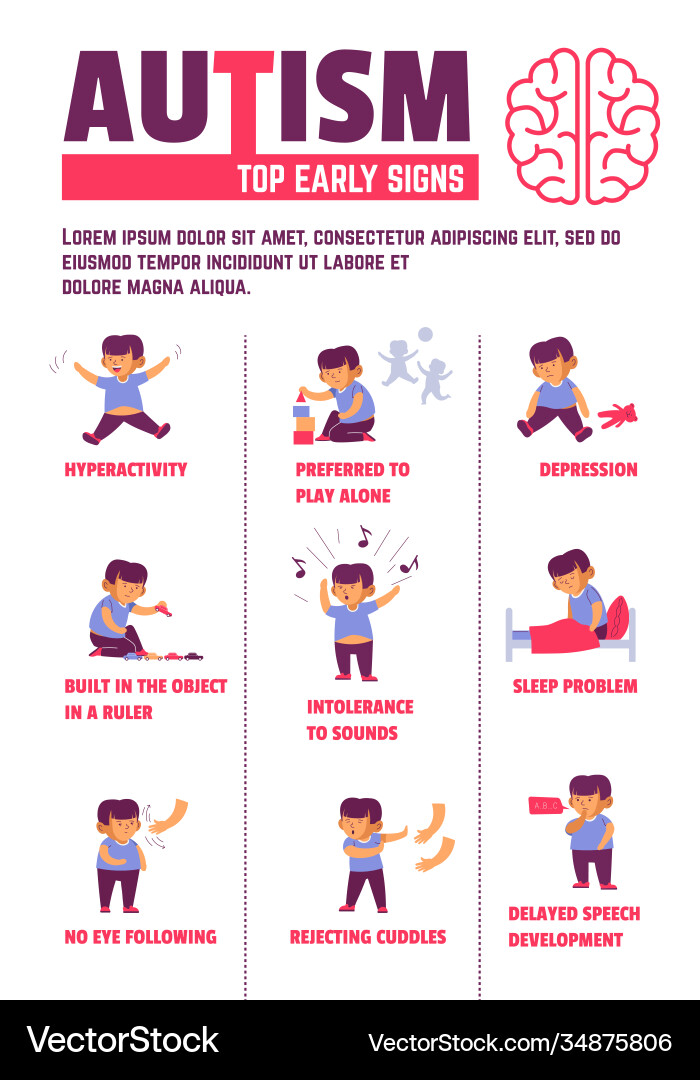 There may be days when you feel overwhelmed, stressed, or discouraged. Parenting isn't ever easy, and raising a child with special needs is even more challenging. In order to be the best parent you can be, it's essential that you take care of yourself.
There may be days when you feel overwhelmed, stressed, or discouraged. Parenting isn't ever easy, and raising a child with special needs is even more challenging. In order to be the best parent you can be, it's essential that you take care of yourself.
Don't try to do everything on your own. You don't have to! There are many places that families of children with ASD can turn to for advice, a helping hand, advocacy, and support:
ADS support groups – Joining an ASD support group is a great way to meet other families dealing with the same challenges you are. Parents can share information, get advice, and lean on each other for emotional support. Just being around others in the same boat and sharing their experience can go a long way toward reducing the isolation many parents feel after receiving a child's diagnosis.
Respite care – Every parent needs a break now and again. And for parents coping with the added stress of ASD, this is especially true. In respite care, another caregiver takes over temporarily, giving you a break for a few hours, days, or even weeks.
In respite care, another caregiver takes over temporarily, giving you a break for a few hours, days, or even weeks.
[Read: Respite Care]
Individual, marital, or family counseling – If stress, anxiety, or depression is getting to you, you may want to see a therapist of your own. Therapy is a safe place where you can talk honestly about everything you're feeling—the good, the bad, and the ugly. Marriage or family therapy can also help you work out problems that the challenges of life with an autistic child are causing in your spousal relationship or with other family members.
With over 25,000 licensed counselors, BetterHelp has a therapist that fits your needs. It's easy, affordable, and convenient.
GET 20% OFF
Online-Therapy.com is a complete toolbox of support, when you need it, on your schedule. It only takes a few minutes to sign up.
GET 20% OFF
Teen Counseling is an online therapy service for teens and young adults. Connect with your counselor by video, phone, or chat.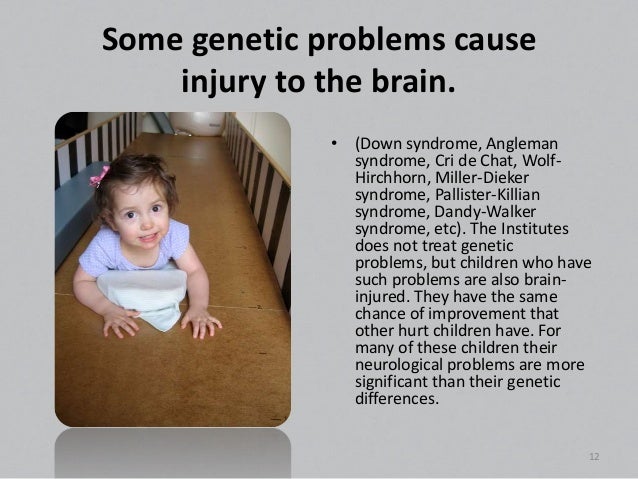
GET 20% OFF
Free U.S. government services for children with autism
Under the U.S. federal law known as the Individuals with Disabilities Education Act (IDEA), children with disabilities—including those with ASD—are eligible for a range of free or low-cost services. Under this provision, children in need and their families may receive medical evaluations, psychological services, speech therapy, physical therapy, parent counseling and training, assisted technology devices, and other specialized services.
Children under the age of 10 do not need an autism diagnosis to receive free services under IDEA. If they are experiencing a developmental delay (including delays in communication or social development), they are automatically eligible for early intervention and special education services.
Early intervention services (birth through age two)
Infants and toddlers through the age of two receive assistance through the Early Intervention program. In order to qualify, your child must first undergo a free evaluation. If the assessment reveals a developmental problem, you will work with early intervention treatment providers to develop an Individualized Family Service Plan (IFSP). An IFSP describes your child's needs and the specific services he or she will receive.
If the assessment reveals a developmental problem, you will work with early intervention treatment providers to develop an Individualized Family Service Plan (IFSP). An IFSP describes your child's needs and the specific services he or she will receive.
For autism, an IFSP would include a variety of behavior, physical, speech, and play therapies. It would focus on preparing autistic kids for the eventual transition to school. Early intervention services are typically conducted in the home or at a child care center.
To locate local early intervention services for your child, ask your pediatrician for a referral or use the resources listed in the “Get more help” section at the end of the article.
Special education services (age three and older)
Children over the age of three receive assistance through school-based programs. As with early intervention, special education services are tailored to your child's individual needs. Autistic children are often placed with other developmentally delayed kids in small groups where they can receive more individual attention and specialized instruction.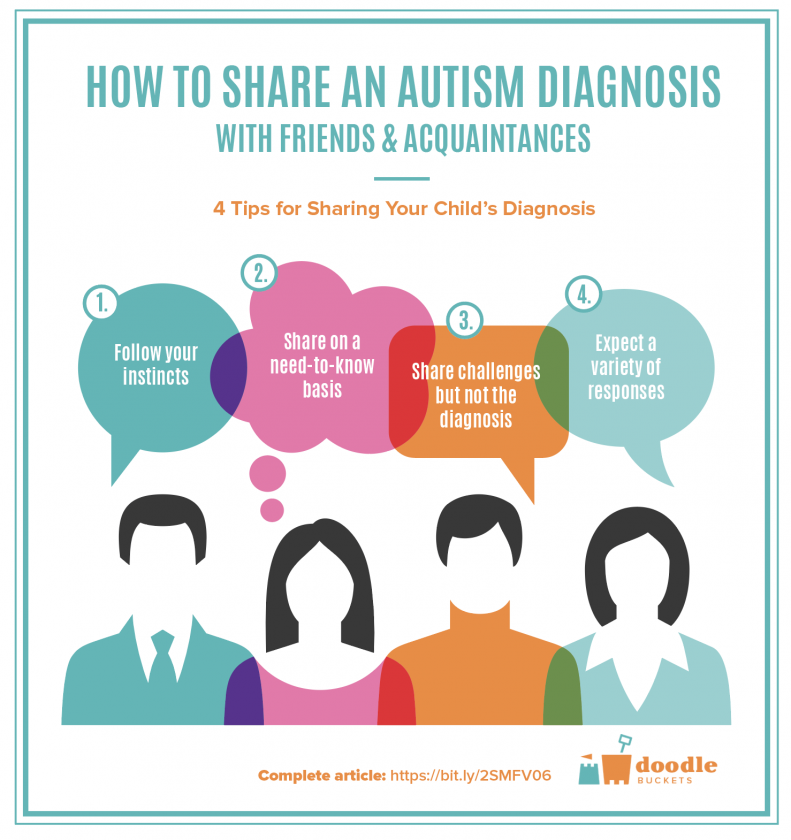 However, depending on their abilities, they may also spend at least part of the school day in a regular classroom. The goal is to place kids in the “least restrictive environment” possible where they are still able to learn.
However, depending on their abilities, they may also spend at least part of the school day in a regular classroom. The goal is to place kids in the “least restrictive environment” possible where they are still able to learn.
If you'd like to pursue special education services, your local school system will first need to evaluate your child. Based on this assessment, an Individualized Education Plan (IEP) will be drafted. An IEP outlines the educational goals for your child for the school year. Additionally, it describes the special services or supports the school will provide your child in order to meet those goals.
Know your child's rights
As the parent of a child with ASD, you have a legal right to:
- Be involved in developing your child's IEP from start to finish
- Disagree with the school system's recommendations
- Seek an outside evaluation for your child
- Invite anyone you want—from a relative to your child's doctor—to be on the IEP team
- Request an IEP meeting at any time if you feel your child's needs are not being met
- Free or low-cost legal representation if you can't come to an agreement with the school
Caring for a child with autism when you are autistic
Research indicates that there is a genetic component to autism.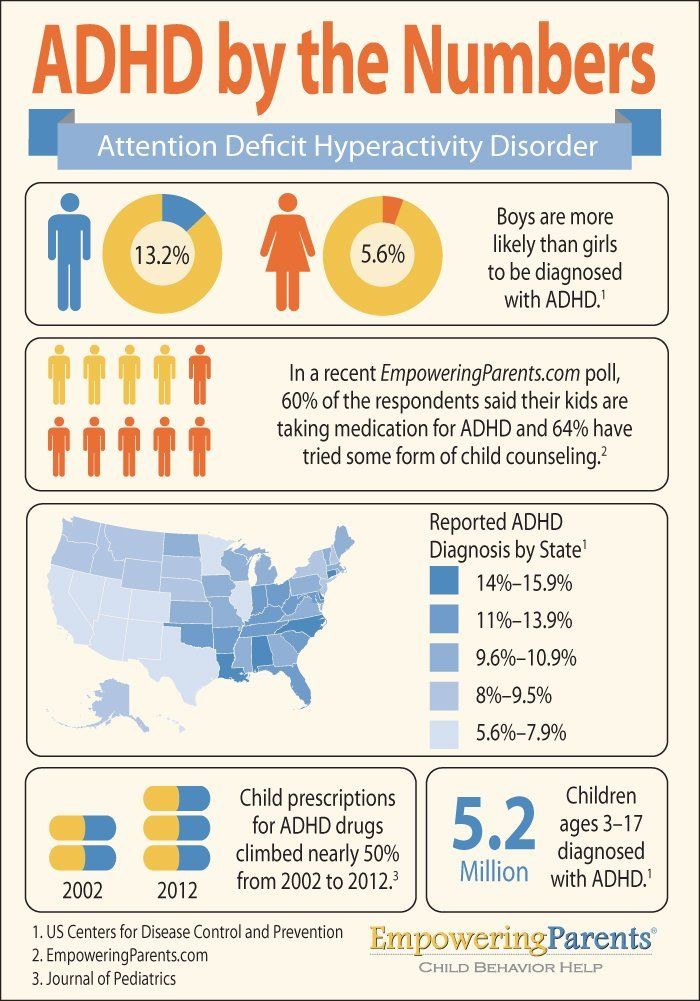 However, many parents only discover they’re autistic when they research and obtain a formal diagnosis for their own child. If you’re autistic, you might face unique challenges when it comes to raising children who are also neurodivergent. Here are a few tips that may help:
However, many parents only discover they’re autistic when they research and obtain a formal diagnosis for their own child. If you’re autistic, you might face unique challenges when it comes to raising children who are also neurodivergent. Here are a few tips that may help:
Don’t hide your identity. Let your child get to know the real you. If you have certain quirks, such as repetitive behaviors or unusual body movements, don’t feel pressured to mask them in front of your child. By being yourself, you’re encouraging your autistic child to be themselves around you and creating an opportunity to bond over your similarities. You can also talk with your child about how neurotypical individuals may react to your behaviors and how to handle negative reactions. Aim to offer the type of guidance you could’ve used when you were young.
Remember to care for yourself. Caring for a child can be challenging if you struggle with sensory needs or require a highly structured lifestyle.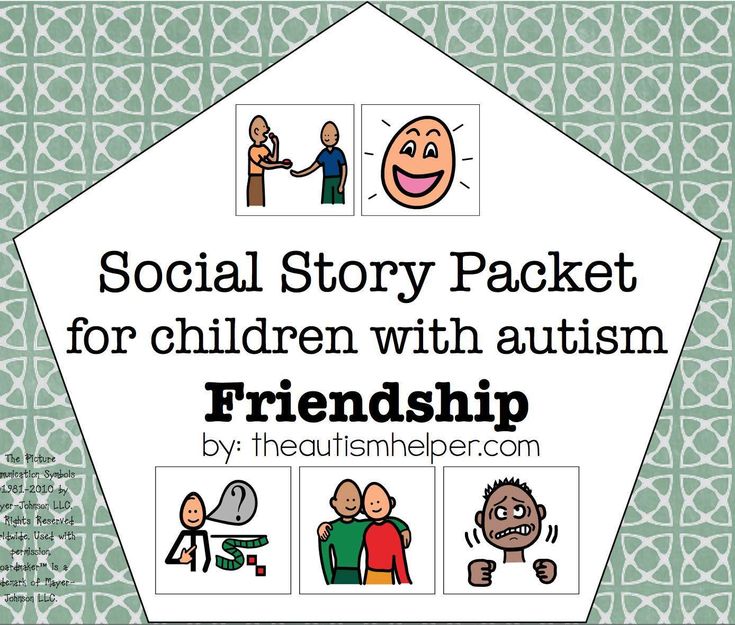 For example, if you’re sensitive to sounds, a crying child may be a constant source of stress and discomfort. A child’s sudden tantrums can make it hard for you to stick to a consistent schedule, creating further frustration. To protect your own sense of well-being, it’s important for you to adopt coping habits that help reduce your stress in these types of situations.
For example, if you’re sensitive to sounds, a crying child may be a constant source of stress and discomfort. A child’s sudden tantrums can make it hard for you to stick to a consistent schedule, creating further frustration. To protect your own sense of well-being, it’s important for you to adopt coping habits that help reduce your stress in these types of situations.
[Read: Autism in Adults: Recognizing the Signs, Living with a Diagnosis]
If certain tasks seem overwhelming, look to other people for support. For example, if communicating with doctors and teachers poses a challenge, a parenting mentor or other parents with autism might be able to help you come up with solutions.
Build on your strengths. Everyone has specific strengths, and you’re no exception. Consider how your skills and talents can help you establish a supportive household for your child. Do you excel at visual thinking or design? Create educational posters for your child. Are you able to focus for long periods of time? Use that focus to research and study up on parenting practices and coping strategies.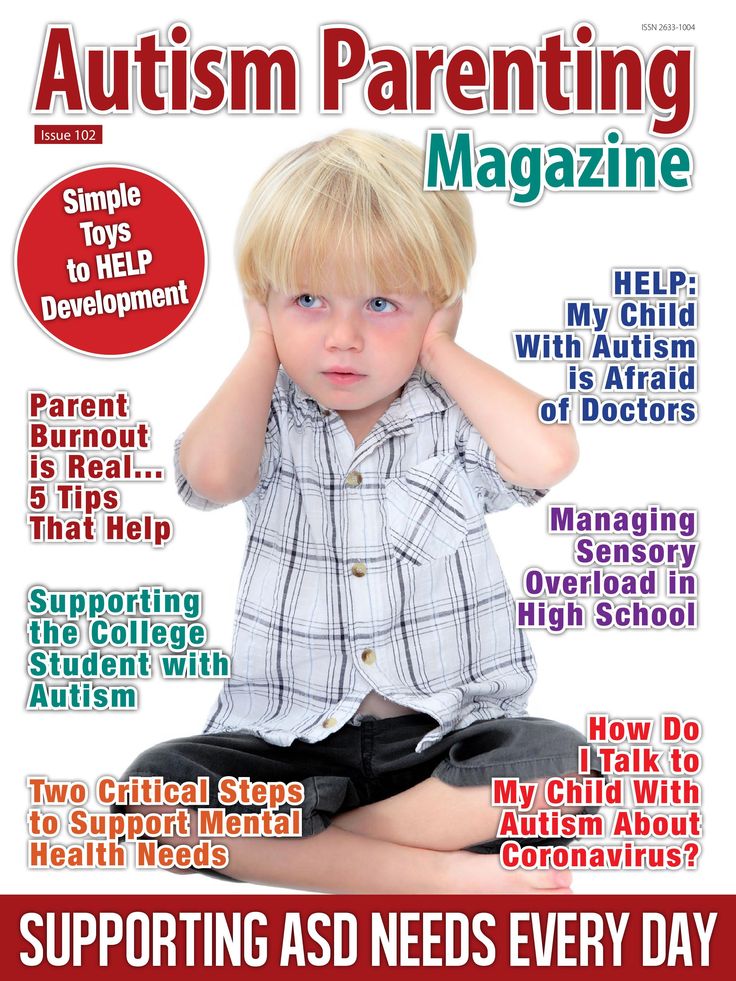 Are you good at problem-solving? Use your creativity and out-of-the-box thinking to overcome challenges around the house.
Are you good at problem-solving? Use your creativity and out-of-the-box thinking to overcome challenges around the house.
Be patient with yourself and your child. Be willing to accept that you both have plenty of time to grow and learn. You might experience some setbacks. Perhaps, you lose your temper and feel ashamed by your reaction. Or maybe your child has a hard time fitting in with peers when they start school. Resolve to learn from bad experiences and find solutions, even if you have to make multiple attempts. When one of you does make progress, remember to acknowledge the growth. Offer your child praise and celebrate your personal successes as well.
Authors: Authors: Melinda Smith, M.A., Jeanne Segal, Ph.D., and Ted Hutman, Ph.D.
Ted Hutman, Ph.D. is Assistant Clinical Professor in Psychiatry at the David Geffen School of Medicine at UCLA and a licensed clinical psychologist practicing in Santa Monica, CA.
- References
Neurodevelopmental Disorders.
 (2013). In Diagnostic and Statistical Manual of Mental Disorders. American Psychiatric Association. https://doi.org/10.1176/appi.books.9780890425787.x01_Neurodevelopmental_Disorders
(2013). In Diagnostic and Statistical Manual of Mental Disorders. American Psychiatric Association. https://doi.org/10.1176/appi.books.9780890425787.x01_Neurodevelopmental_DisordersAutism spectrum disorder: MedlinePlus Genetics. (n.d.). Retrieved June 16, 2022, from https://medlineplus.gov/genetics/condition/autism-spectrum-disorder/
Autistic children may inherit DNA mutations from their fathers | Science | AAAS. (n.d.). Retrieved June 16, 2022, from https://www.science.org/content/article/autistic-children-may-inherit-dna-mutations-their-fathers
Five Tips for Autistic Parents from This Autistic Parent – The Asperger / Autism Network (AANE). (n.d.). Retrieved June 16, 2022, from https://www.aane.org/five-tips-for-autistic-parents-from-this-autistic-parent/
Individuals with Disabilities Education Act (ACT). (n.d.). Retrieved June 16, 2022, from https://www.apa.org/advocacy/education/idea
Individuals with Disabilities Education Act (IDEA) Services | CDC.
 (n.d.). Retrieved June 16, 2022, from https://www.cdc.gov/ncbddd/cp/treatment.html
(n.d.). Retrieved June 16, 2022, from https://www.cdc.gov/ncbddd/cp/treatment.htmlSensory differences—A guide for all audiences. (n.d.). Retrieved June 16, 2022, from https://www.autism.org.uk/advice-and-guidance/topics/sensory-differences/sensory-differences/all-audiences
The Autism Revolution – Whole body strategies for making life all it can be (Harvard Health Books)
Living with Autism – Including how to cope with stress on the family, make the home safe, and deal with sibling issues. (Autism Society of America)
Life Journey Through Autism: A Parent's Guide to Research (PDF) – Guide to choosing treatments for your children. (Organization for Autism Research)
Parent Guide to IDEA – Guide to the Individuals with Disabilities Education Act (IDEA) in the U.S. (National Center for Learning Disabilities)
Individualized Education Plans (IEPs) – Learn all about IEPs in the U.S. for kids with autism and other developmental issues.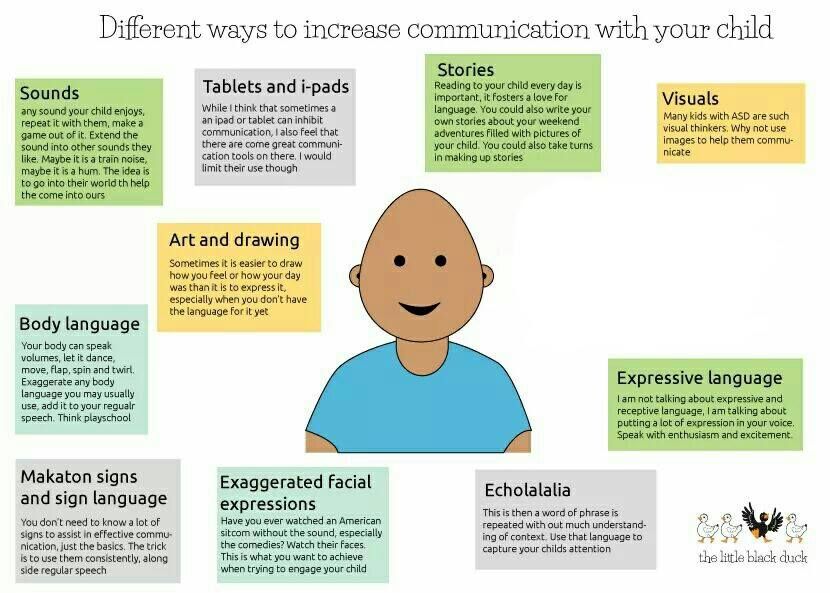 (KidsHealth)
(KidsHealth)
How is Autism Treated? – Therapies and treatments. (Autism Speaks)
Hotlines and support
In the U.S.: Call the Autism Society National Helpline at 1-800-328-8476.
UK: Call the Child Autism UK helpline at 01344 882248 or find help and support at The National Autistic Society.
Australia: Call the Early Intervention helpdesk in Perth at 1800 778 581 or Get support for your child from NDIS.
Canada: Call the Autism Canada Family Support Representative at 1-800-983-1795.
New Zealand: Find helplines and support in your area at Autism New Zealand.
Last updated: December 5, 2022
Autism: what can parents do to help their child?
The first 2-3 years are especially difficult for a couple who have had their first child. Young mothers and fathers are still learning to be parents, and it is quite difficult to understand that the development of their child is different from others.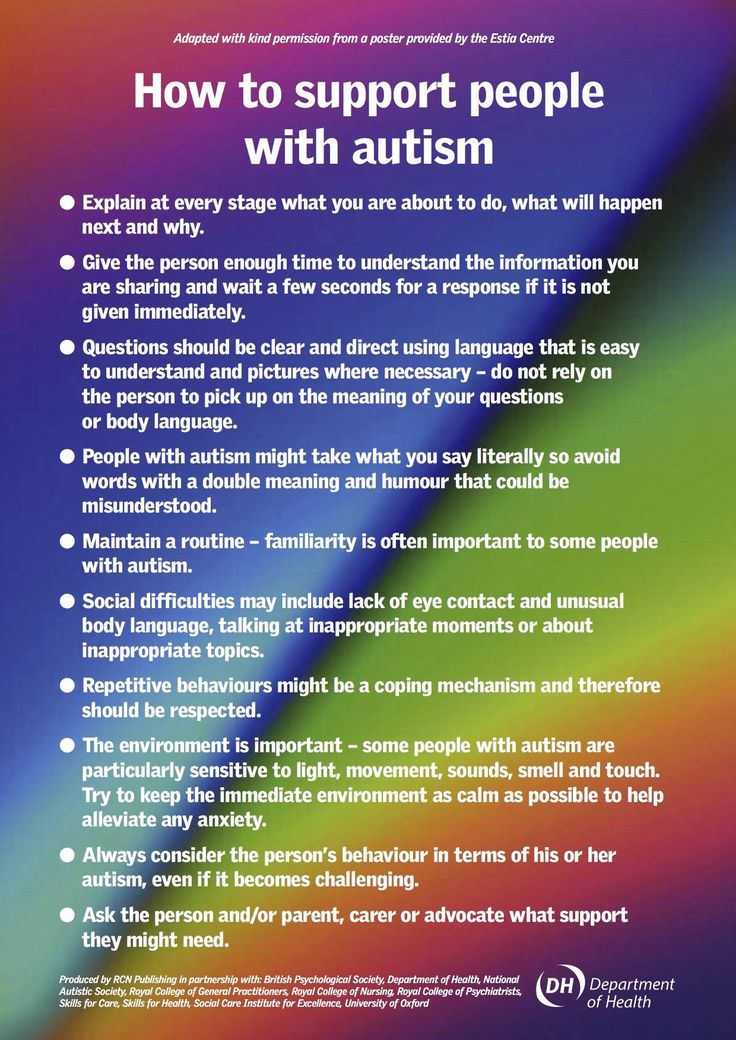 It's even harder to accept that your baby may have a mental disorder. Childhood autism, or as it is now also called, autism spectrum disorders (ASD), today occurs in every 88th child. How to recognize the disease and what should parents pay attention to? These and other questions related to autism were answered by the Head of the Department of Psychiatry and Narcology, Doctor of Medical Sciences, Associate Professor Grechany Severin Vyacheslavovich.
It's even harder to accept that your baby may have a mental disorder. Childhood autism, or as it is now also called, autism spectrum disorders (ASD), today occurs in every 88th child. How to recognize the disease and what should parents pay attention to? These and other questions related to autism were answered by the Head of the Department of Psychiatry and Narcology, Doctor of Medical Sciences, Associate Professor Grechany Severin Vyacheslavovich.
What is autism? Is this disease born or is it an acquired condition in the environment in which the child grows up?
Childhood autism is a congenital disease. The fact of its occurrence cannot be the result of such external causes as, for example, the social or cultural level of the family. The decisive role is played by the biological factor that determines the birth of such a child. Of course, there are external circumstances that, ceteris paribus, provoke the appearance of symptoms of this disorder - a severe viral infection, in some cases even a sharp change in the family situation, for example, a sudden separation from the mother, hospitalization of the child in the hospital and more.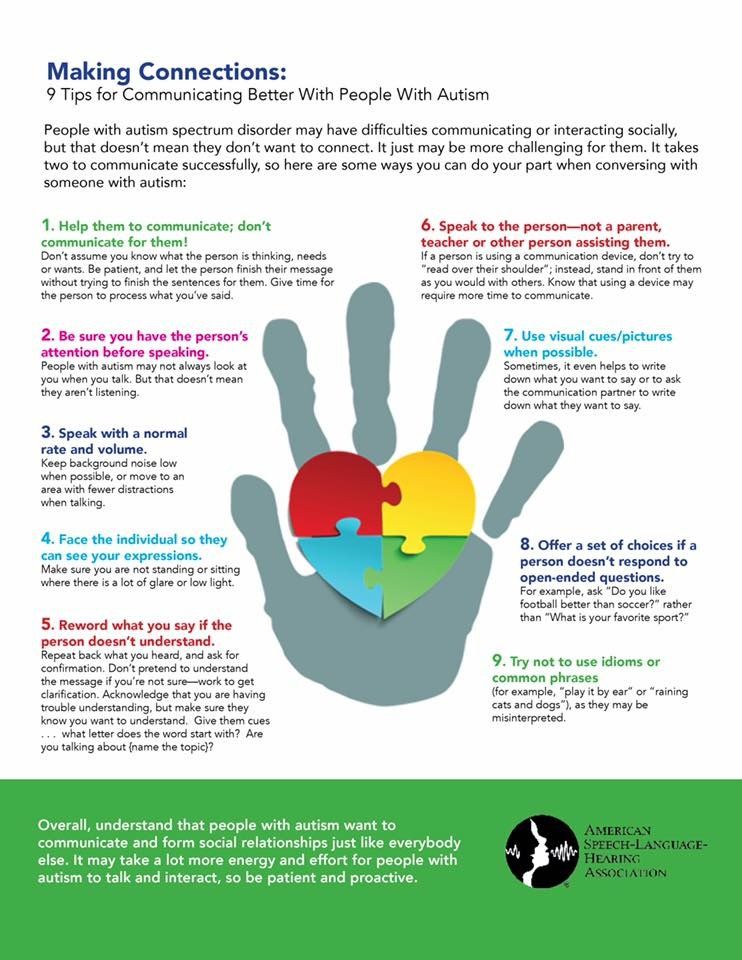 Often an autistic child is the firstborn in the family, and parents do not yet know how the child should develop. Subsequently, they recall that they often thought about why their child did not develop like other children, but still they did not suspect serious deviations. Therefore, this day - April 2 - just calls for adults to take a closer look at the child in general and notice any anomalies in his development as early as possible. And whether this is autism or some other disease - this should be decided by the doctor.
Often an autistic child is the firstborn in the family, and parents do not yet know how the child should develop. Subsequently, they recall that they often thought about why their child did not develop like other children, but still they did not suspect serious deviations. Therefore, this day - April 2 - just calls for adults to take a closer look at the child in general and notice any anomalies in his development as early as possible. And whether this is autism or some other disease - this should be decided by the doctor.
How can parents tell if their child has the condition?
Unfortunately, often parents do not immediately pay attention to the atypical, age-specific behavior of their child. This circumstance gave rise to some myths that autism can occur with the wrong parenting approach or after some medical interventions, including preventive vaccinations. This cannot be believed, since childhood autism also goes through a latent phase in its development, when its symptoms are almost imperceptible, but this does not mean that it was not there from birth.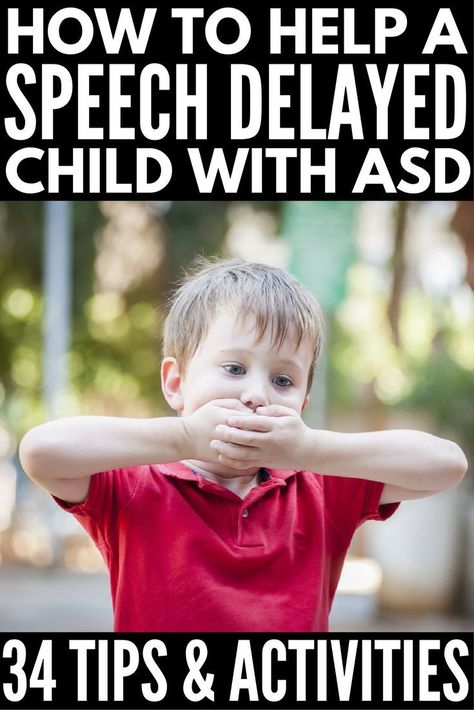 However, you need to know the so-called "red flags of autism", with the manifestation of which it is worth contacting a specialist. These include:
However, you need to know the so-called "red flags of autism", with the manifestation of which it is worth contacting a specialist. These include:
- child does not use pointing gesture,
- does not make eye contact, does not smile in response to a smile,
- does not respond to his name or to requests addressed to him,
- does not hear speech, does not understand why adults turn to him,
- does not say a 2-word phrase by age 2,
- does not use toys for its intended purpose.
Often the child does not develop a plot game. For example, a car for a boy is not an image of a car that he saw on the street, but only wheels that can be turned. With the help of a toy, a child cannot reproduce the plot seen in life. In the same way, for a girl, a doll is not an image of a little man whom she can put to sleep or feed, but an indifferent object with moving parts. It is also worth paying attention to how the child communicates, whether he can follow the simple instructions of an adult, and concentrate his attention.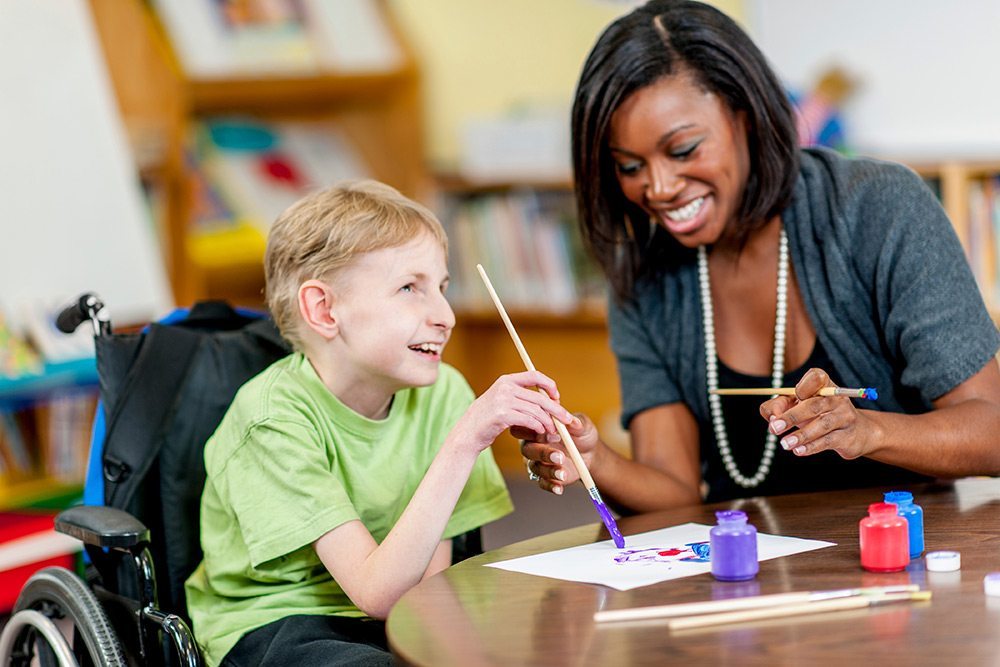 If parents notice these features, then you need to see a doctor.
If parents notice these features, then you need to see a doctor.
Is it possible to cure autism or only bring adaptation to life to a certain level? Which doctor to contact in this case?
Any specialist can suspect autism. Suppose the district pediatrician assumes that the child has autism and advises parents to contact a psychiatrist. However, it is important to understand that the final diagnosis may differ from the initial one, and there are other mental disorders besides childhood autism at an early age.
Is child autism treated at the Pediatric University Clinic?
We don’t have a separate department yet, besides, working with an autistic child is a long-term, often many-year work of a large team of different specialists, including not only doctors, but also correctional teachers, clinical psychologists and their varieties, rehabilitation specialists etc. However, we consult such children and their mothers at the stage of early diagnosis, when parents, for various reasons, are not yet ready to go to official psychiatric institutions.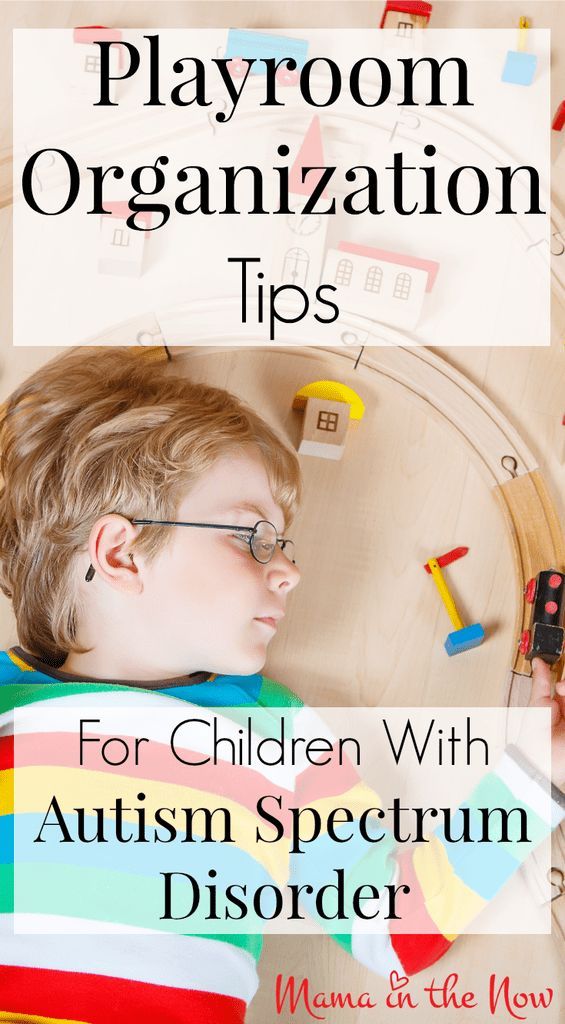 Thus, difficult and doubtful diagnostic cases are solved, the very first recommendations are given. For example, I receive at the Multidisciplinary Center, Vera Vladimirovna Pozdnyak takes at the Consultative and Diagnostic Center. We provide primary care to these children. We give advice on how to treat a possible disease in a child, how to behave with such children and what options for drug therapy exist. Most moms walk away grateful as they get answers to questions that have haunted them for a long time.
Thus, difficult and doubtful diagnostic cases are solved, the very first recommendations are given. For example, I receive at the Multidisciplinary Center, Vera Vladimirovna Pozdnyak takes at the Consultative and Diagnostic Center. We provide primary care to these children. We give advice on how to treat a possible disease in a child, how to behave with such children and what options for drug therapy exist. Most moms walk away grateful as they get answers to questions that have haunted them for a long time.
As far as treatment is concerned, we do not provide it. In addition, parents, faced with the problem of autism, must understand that it is impossible to completely cure it, and they will have to accept that throughout their life the child will be special, unlike all others. There has never been such a case that the same classic autism ended in complete adaptation in society, even if the child at some stage was able to master the profession. Although it is believed that with age the diagnosis of "autism" cannot be reconsidered for a child, but most of the actual "autistic" traits disappear on their own over time.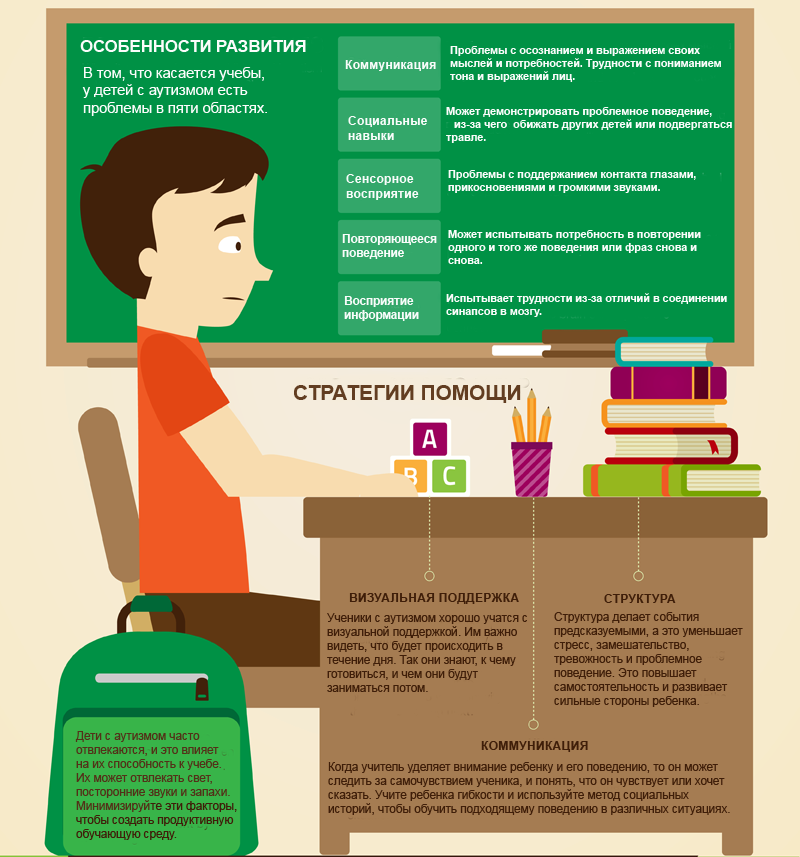 And already at the age of 6-7, other problems related to behavior, underdevelopment of abstract concepts, misunderstanding of the context of communication, i.e. purely intellectual difficulties, come to the fore. In the future, parents will need to adapt the child to life with what is, including special requirements for the learning process. At home, you should also follow a special system of rules developed individually for a particular child.
And already at the age of 6-7, other problems related to behavior, underdevelopment of abstract concepts, misunderstanding of the context of communication, i.e. purely intellectual difficulties, come to the fore. In the future, parents will need to adapt the child to life with what is, including special requirements for the learning process. At home, you should also follow a special system of rules developed individually for a particular child.
How can parents help their child cope with autism? Can you give any recommendations for them?
The most important recommendation, from our point of view, is to initially understand the child's capabilities, not to do too much and not to set too high goals. The biggest conflict arises precisely when parents are faced with a contradiction between the real abilities of the child and their own ambitions for him. And everything negative that can happen later - protests, disobedience, experiencing disappointment and despair - all this comes precisely from this conflict.
The main principle for parents is to gain a sense of confidence as a caregiver and get rid of excessive feelings of guilt. You need to know that an autistic child is very sensitive to the internal state of his parents, easily reacts to their anxiety, confusion. With regard to mental development, one should be prepared for the fact that it will take a long time to achieve success, even small ones. It does not happen that a child falls asleep with one person and wakes up with another person.
Another common mistake is the opinion that the most important thing for a child is to learn to talk. This is wrong. If speech does not appear on its own, then there are objective reasons for this. As soon as the prerequisites for pronouncing words are formed, the child will begin to speak independently without our help. Therefore, you should not artificially try to accelerate the development of such a child.
Is it possible to say that modern communication devices, computers, gadgets, mobile phones can develop autism in a child? And do they somehow affect children who have already been diagnosed with this disease? (Can modern technology help to socialize or, on the contrary, contribute to the fact that the child withdraws more and more into himself?)
In autism, this is neither good nor bad.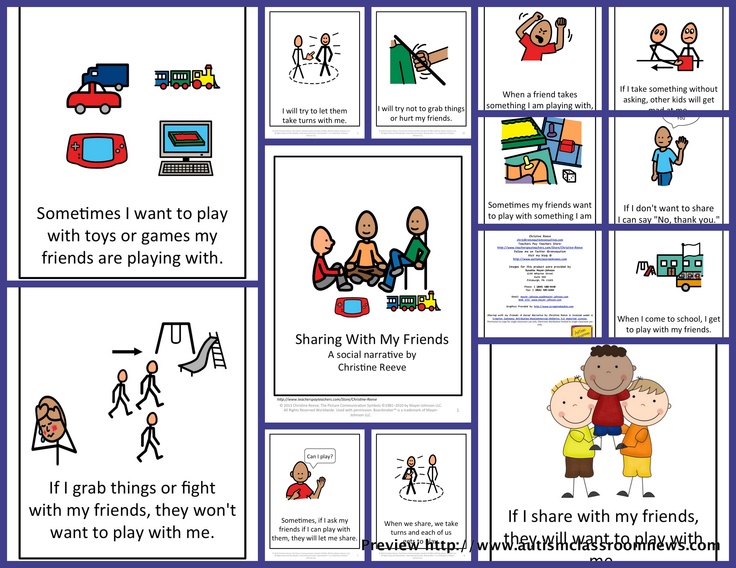 There can be no universal recommendation here, everything is individual. It is important for a mother to understand whether her child is now ready to master society or whether she still needs to wait, subsequently carefully “grafting” him to life. Here the advice of a defectologist, a psychiatrist will help. True, very often the mothers of such children are guided only by their own opinion, without accepting someone else's help. This happens if their relatives betrayed them, the father left, the grandparents did not accept the child, and the mother is left alone with the problem.
There can be no universal recommendation here, everything is individual. It is important for a mother to understand whether her child is now ready to master society or whether she still needs to wait, subsequently carefully “grafting” him to life. Here the advice of a defectologist, a psychiatrist will help. True, very often the mothers of such children are guided only by their own opinion, without accepting someone else's help. This happens if their relatives betrayed them, the father left, the grandparents did not accept the child, and the mother is left alone with the problem.
Why is autism thought to be more common in boys? And why is it more characteristic of them?
Indeed, this is a fundamental fact. And childhood autism is not the only example. A lot of mental disorders occur more often in boys. Why this is so is hard to say. There are many hypotheses for this, but an exhaustive explanation has not yet been received.
Maybe there is some relationship between the mother's condition during pregnancy and the child's subsequently diagnosed autistic disorder? Is it possible to somehow predict the birth of a child with autism? What are the medical reasons?
Mothers often ask me: “Tell me, please, where, at what stage did I make a mistake? What did I do wrong? Unfortunately, despite the fact that we live in the 21st century, there are no prerequisites to predict the birth of such a child.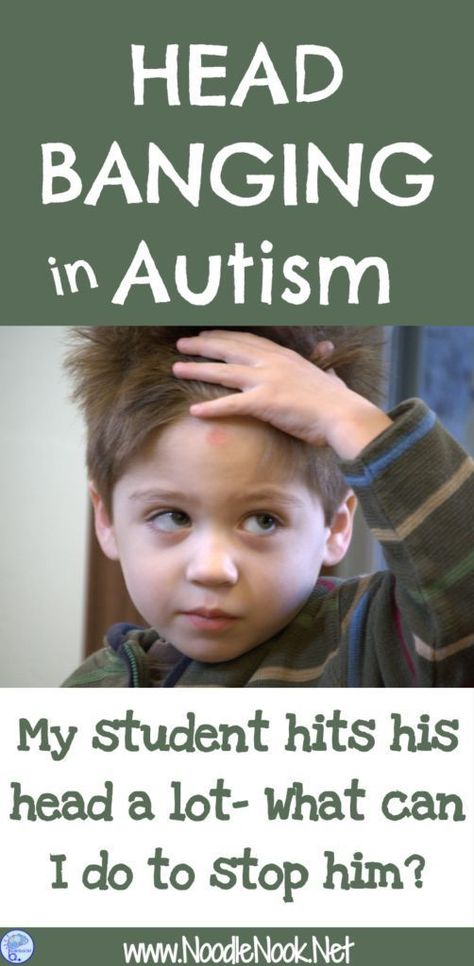 With the exception of the examination of the amniotic fluid for gross genetic anomalies. If this is observed, then we can say with a high degree of probability that a clinical picture of autism should be expected here. In all other cases, it is difficult to predict anything. There is no data for this.
With the exception of the examination of the amniotic fluid for gross genetic anomalies. If this is observed, then we can say with a high degree of probability that a clinical picture of autism should be expected here. In all other cases, it is difficult to predict anything. There is no data for this.
Is it true that autism is more common in children today than it was 10, 20, 30 years ago?
It is believed that the number of children with autism has not increased, diagnosis has improved. This happened due to the spread of information about autism and its manifestations. As a result, parents began to pay more attention to what they had not noticed before. And, as a result, the number of visits to doctors for the purpose of making a diagnosis has increased. What used to cause confusion and misunderstanding in parents, now prompts a search for answers in specialized literature, the Internet. As a result, the symptoms of autism began to be detected more often and at an earlier age. And here there is another extreme - the emerging trend towards overdiagnosis of this disorder. A special term has even appeared - autism spectrum disorders, the role of which is seen in drawing more attention of parents to any symptoms of deviant development, closely or remotely resembling childhood autism, in order to promptly apply for practical assistance.
And here there is another extreme - the emerging trend towards overdiagnosis of this disorder. A special term has even appeared - autism spectrum disorders, the role of which is seen in drawing more attention of parents to any symptoms of deviant development, closely or remotely resembling childhood autism, in order to promptly apply for practical assistance.
Can an autistic child go to a regular school, or is it better to send him to a special school?
There are inclusive types of education that allow such children to study in a regular school. A group of 3-4 such children is recruited, and most of the time they study with a separate teacher. Periodically, the teacher selectively leads, as far as possible, such children to classes with healthy children. But the need for such classes must be considered individually. All possible consequences should be taken into account. For example, in practice, children with autism are not very physically healthy, they are characterized by weak immunity - this increases their risk of getting respiratory and other infectious diseases, which usually occur in a more severe form in children with autism.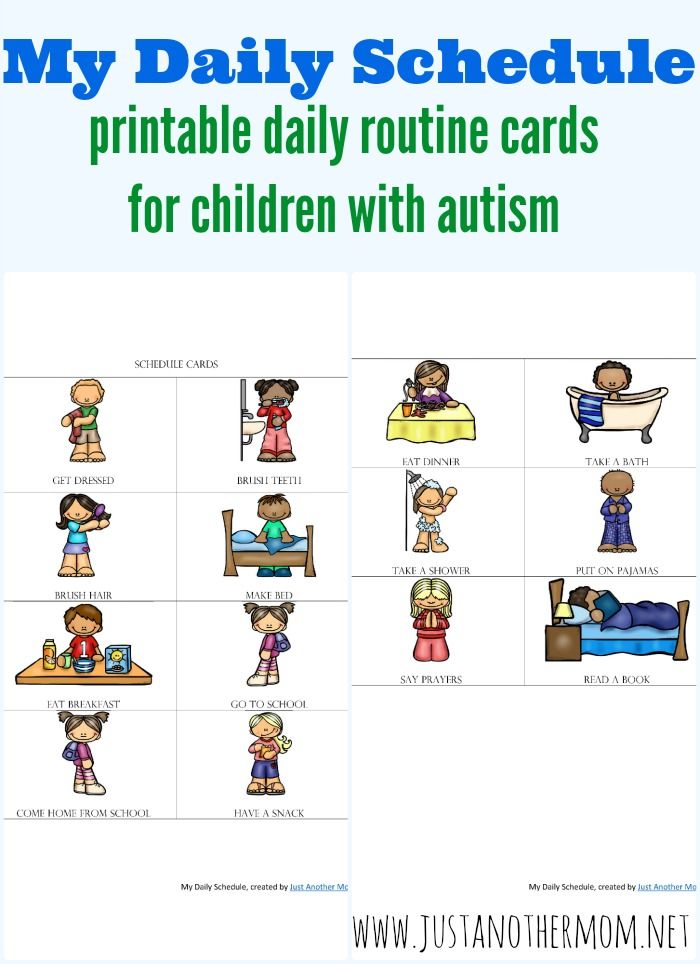 After all, even under normal conditions, autistic children get sick more often than other children. In addition, education in a mass school is possible if there is a special assistant or tutor nearby, a person who guides the child in each specific case and tells him what to do. Often such children, being in mass education, do not follow the school curriculum, but only formally attend the lessons. But what he will learn as a result is a separate question. More often it is a kind of “familiarization” with educational material. And in this situation, we have no right to demand that the child master the entire program. However, one should not forget that traditional defectological assistance in the conditions of ordinary correctional kindergartens and schools has great potential in terms of filling cognitive deficits, and the passage of inclusive education still does not eliminate the need to acquire specialized skills using routine correction methods.
After all, even under normal conditions, autistic children get sick more often than other children. In addition, education in a mass school is possible if there is a special assistant or tutor nearby, a person who guides the child in each specific case and tells him what to do. Often such children, being in mass education, do not follow the school curriculum, but only formally attend the lessons. But what he will learn as a result is a separate question. More often it is a kind of “familiarization” with educational material. And in this situation, we have no right to demand that the child master the entire program. However, one should not forget that traditional defectological assistance in the conditions of ordinary correctional kindergartens and schools has great potential in terms of filling cognitive deficits, and the passage of inclusive education still does not eliminate the need to acquire specialized skills using routine correction methods.
Whatever problems parents face on the difficult path of upbringing, it is important to remember that parental love is important at any stage of growing up.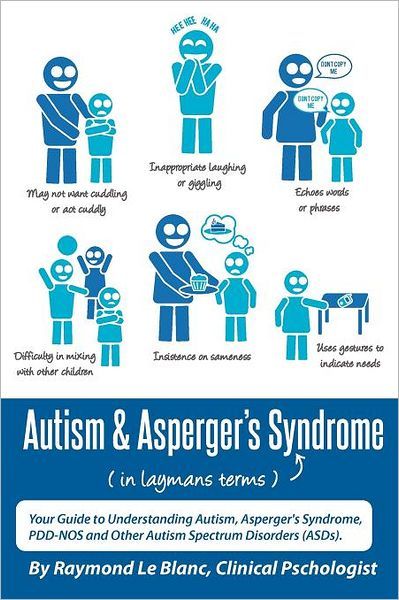
Publication date: 2.04.2020
7 ways to help a child with autism. And yes, ASD is not a sentence
Photo: Naked Heart FoundationAccording to the latest international studies, autism occurs in every 54th child. Autism cannot be "cured", but a child with ASD can learn, communicate with others, play and be part of society. The Naked Heart Foundation blog tells how to help the youngest children with autism spectrum disorder.
Autism spectrum disorder is the most common group of developmental disorders. To date, there are no drug treatments, but there are methods that have proven their effectiveness to overcome the difficulties inherent in ASD. The Naked Heart Foundation's new book, How to Help a Preschooler with Autism Spectrum Disorder, presents these methods.
The authors of the manual, practicing specialists of the foundation, psychologists, educators, specialists in the field of applied behavior analysis, have tried, based on their experience, to answer the most common questions of parents and specialists working with preschool children with ASD:
- What are effective approaches and strategies for teaching children with ASD
- How to help children with ASD learn self-care skills
- How to help develop communication, play and social skills
- How to learn to understand the causes of a child's behavior, cope with difficult behavior and help develop socially acceptable forms of behavior
- How to help a child with eating and sleeping difficulties
We bring to your attention an excerpt from the book.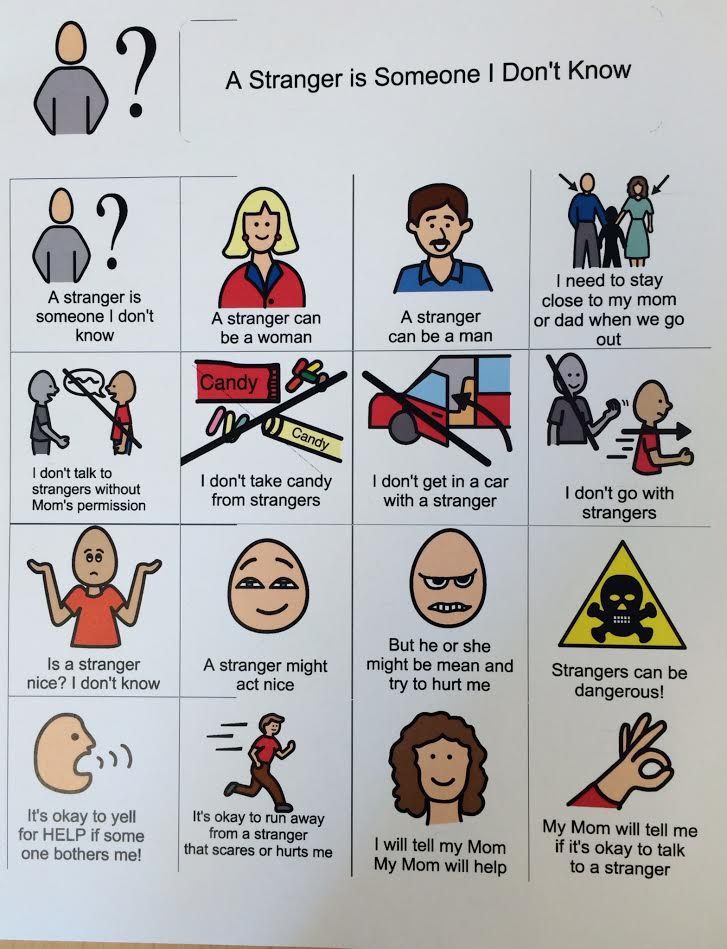
Many parents and professionals who have experience in teaching and raising neurotypical children or children with disabilities that are not part of the ASD report that they do not understand how to teach a child with autism, that the approaches they are used to using do not work. How to teach a child if sometimes it seems that he does not hear, does not understand, does not want to cooperate and shows undesirable behavior? This chapter focuses on some effective strategies that take into account both the strengths of the child with ASD and the existing deficits. These methods allow children with autism to learn more easily, faster, and generally be more successful and have fun. They apply not only to the area of academic skills, but also the skills of play, self-service, communication and interaction. The methods described below also help to reduce the likelihood of unwanted behaviors in the child.
Constantly collecting and analyzing data
Assistance programs must be systematically and objectively tested against the collected data - only then will they be effective.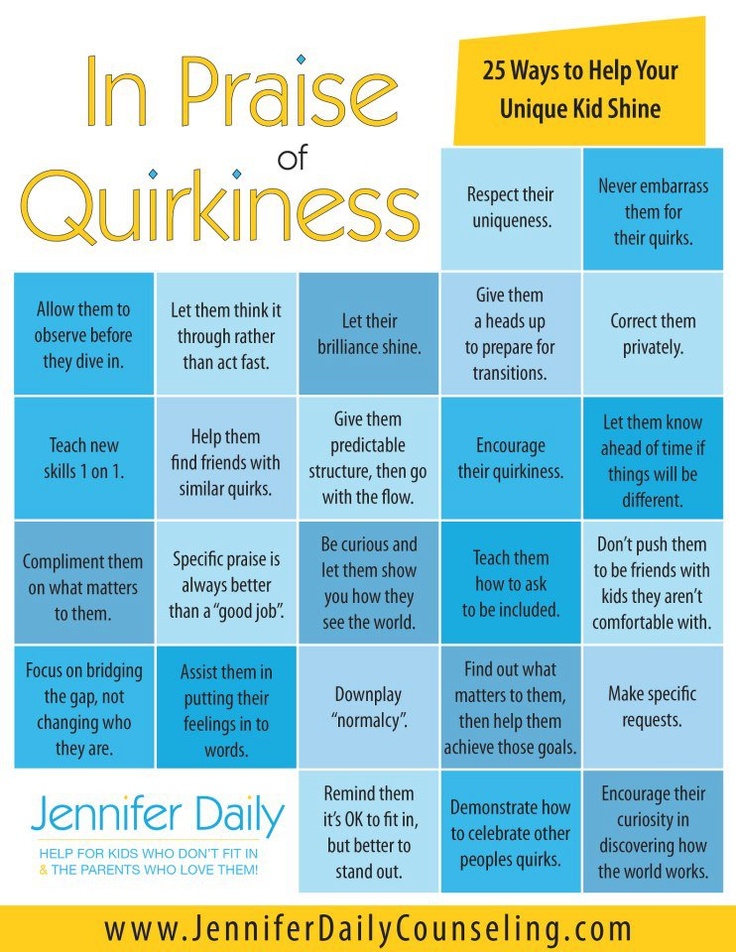 Data collection methods may include recording children's responses to every opportunity that arises, interval recording of a child's progress during certain activities, surveys of specific behaviors, and studying progress over time periods (such as monthly or quarterly). The data collection method should be linked to the child's goals and then used to tailor the intervention to the specific needs of the child and family.
Data collection methods may include recording children's responses to every opportunity that arises, interval recording of a child's progress during certain activities, surveys of specific behaviors, and studying progress over time periods (such as monthly or quarterly). The data collection method should be linked to the child's goals and then used to tailor the intervention to the specific needs of the child and family.
We additionally motivate a child with ASD
The motivation of a child with ASD can differ significantly from the motivation of neurotypical children. Violation of social interaction and communication leads to the fact that, for example, praise or approval for many children with autism may be poorly effective. This means that many of them will not do or not do something for the sake of approval.
We adapt our own communication to the characteristics of a particular child
We take into account that a child with ASD may have difficulty initiating and maintaining a dialogue, as well as understanding the meaning of a message; in this case, it is important for an adult to understand the characteristics of the child and be able to adapt his speech in accordance with his level of development: simplifying and shortening phrases, making instructions more specific and clear, if necessary.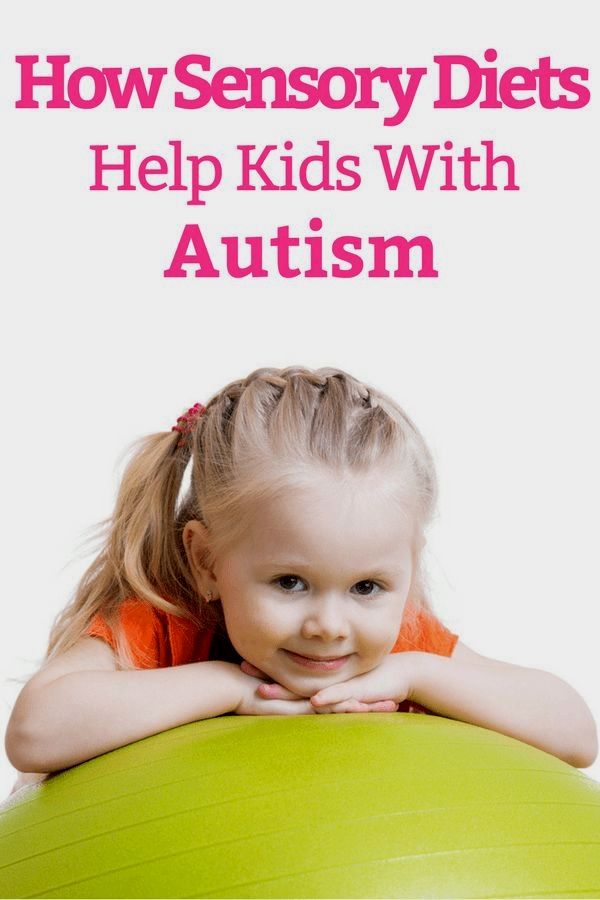
Increasing learning opportunities, explaining the consequences
Often children with ASD—unlike typically developing peers who learn by looking at family members, other adults, or each other—may require special, highly structured learning environments. For this, discrete samples (or the method of individual blocks) can be used - one of the ways of such structured learning. A trial or block is a complete episode consisting of an instruction, a reaction (answer) of the student, a hint (when necessary), providing a consequence (depending on the child's answer) and deleting materials.
Consider an example. The specialist pronounces the instruction: "Show your nose." The student's reaction may be correct: he points to the nose, therefore, the prompt is not needed. Since the answer was correct, the consequence would be praise or some other kind of reward.
If the child makes a mistake (if the child makes no attempt to answer or turns away, this is also considered a mistake).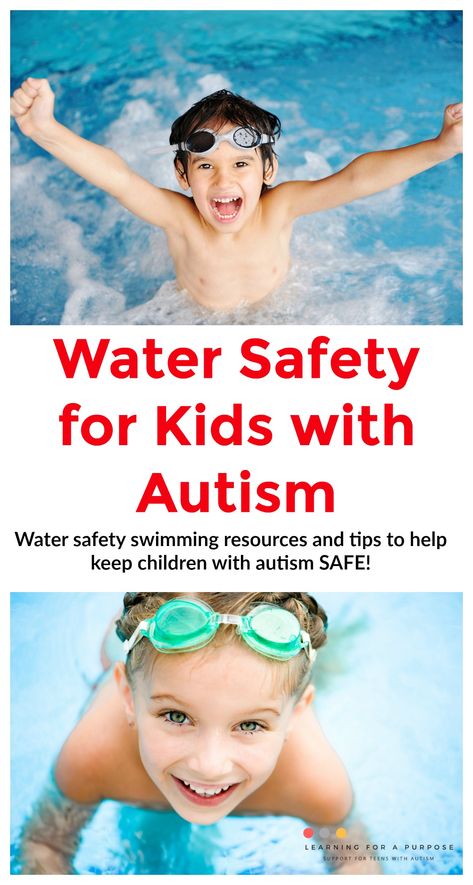 In this case, we repeat the instruction and at the same time provide a hint (for example, pointing to the child's nose). In the case of a response with a prompt, reinforcements are usually provided in a more moderate amount than for an independent response. After instructions with a hint, the test is repeated, while the child is again given the opportunity to answer independently.
In this case, we repeat the instruction and at the same time provide a hint (for example, pointing to the child's nose). In the case of a response with a prompt, reinforcements are usually provided in a more moderate amount than for an independent response. After instructions with a hint, the test is repeated, while the child is again given the opportunity to answer independently.
We provide structuring of the environment and visual support
in a space that looks disorganized and unpredictable, he may experience frustration and increased anxiety, and adults at such moments may observe unwanted behavior.
And vice versa, a properly adapted space will help a child with ASD better understand what is expected of him in a particular area, and will allow him to be more independent.
Structuring time and events
Children with ASD often have difficulty with planning and understanding time. Everything that happens for them is largely unpredictable, unexpected.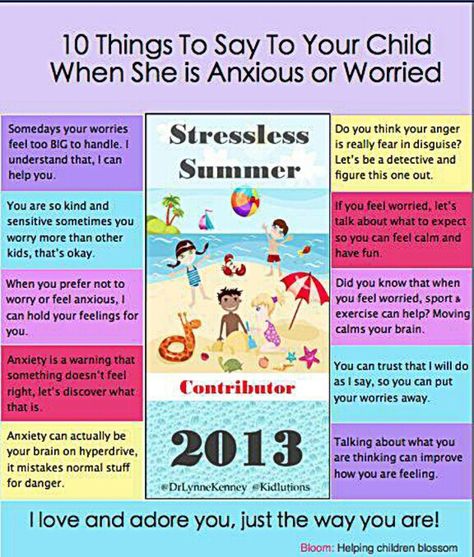 There is no understanding when the activity that is going on at the moment will end, what will happen after that and whether there will be something loved. This is another possible cause of frustration and high anxiety in children with ASD. Schedules and timers help to significantly reduce this problem.
There is no understanding when the activity that is going on at the moment will end, what will happen after that and whether there will be something loved. This is another possible cause of frustration and high anxiety in children with ASD. Schedules and timers help to significantly reduce this problem.
First-Then Schedule - A simple two-point schedule. It is often used as the first step in learning to follow a schedule. The “later” item is always something that motivates the child, is an encouragement for him (a toy, activity, food, playing with another person). The “first” item is what the adult expects from the child at the moment (activity, washing dishes, washing).
If you want the game to be limited in time, you can use the visual sector timer. On timers of this type, when setting the time interval, the sector is highlighted in color. As the game progresses, the child will be able to see how the sector becomes smaller. When the set time ends, a signal sounds. It is important to teach the child to put the toys back in place at the signal of the timer.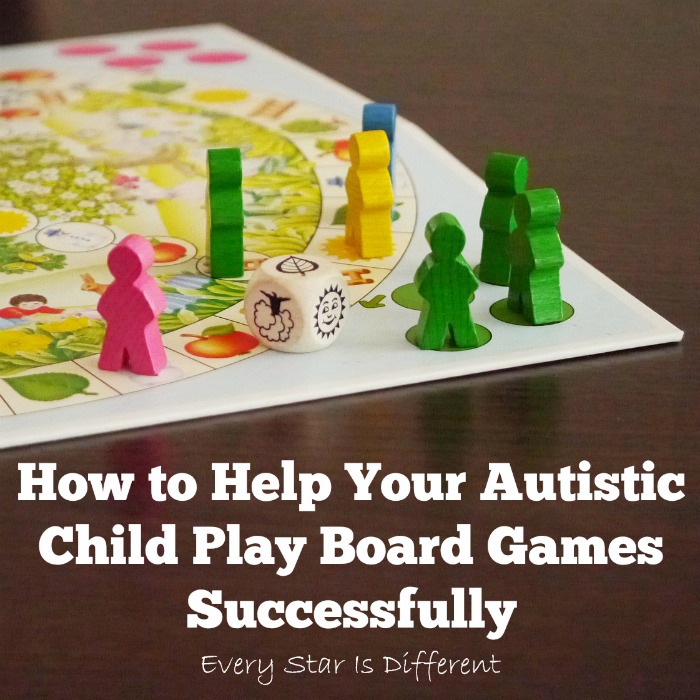 Consistent and regular use of the timer will teach the child to understand the time and finish the game without showing unwanted behavior.
Consistent and regular use of the timer will teach the child to understand the time and finish the game without showing unwanted behavior.
Providing time to process information
Some children with autism may need more time to process information, to hear us, to understand what is said, to find and give the appropriate answer. Giving such a child time for this whole process is critical to his success, independence and maintaining his social activity.
Whatever methods (or combinations of methods) we use in our interaction with a child, it is important to remember that they are only a well-paved road. The child should still have a desire to follow it. Few people are motivated by the mere overcoming of the path - whether it be a child or an adult, with or without developmental disabilities. Motivates, as a rule, what is at the end of the path.
All of us, adults, are motivated by different things: career growth, bonuses, social status, social approval.